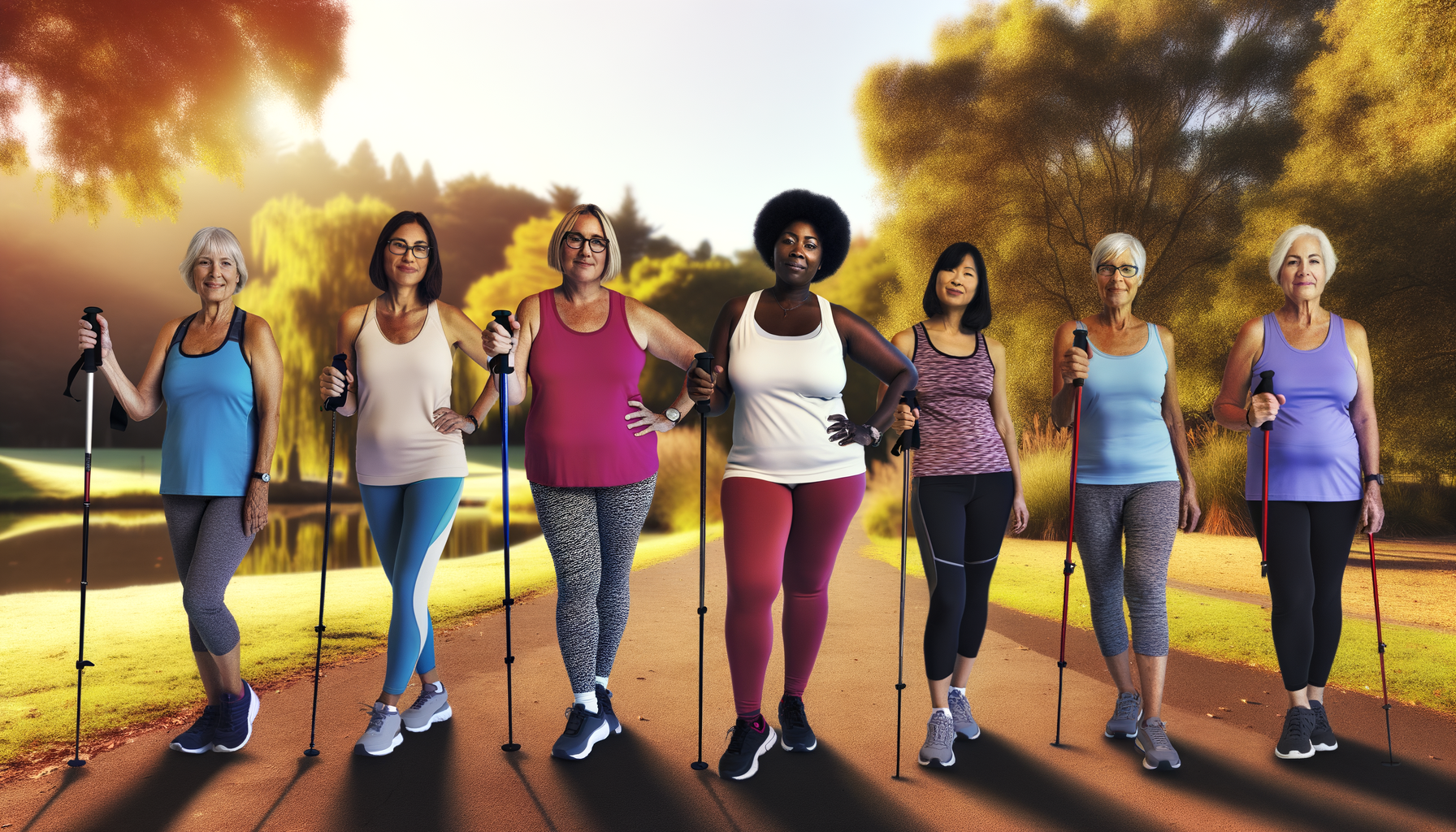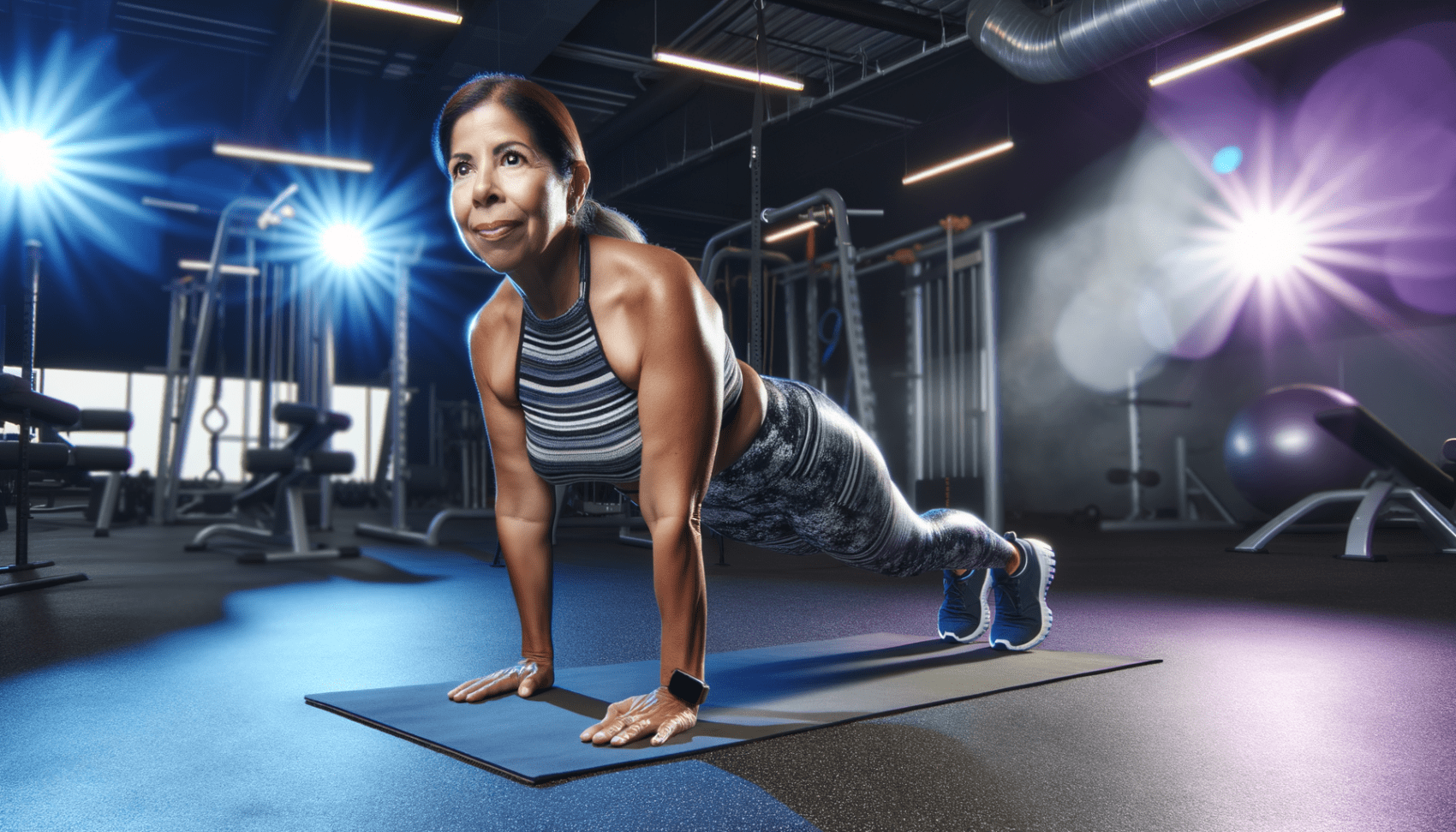Introduction to Menopause and Walking
Understanding Menopause
Menopause marks a significant transition in a woman’s life, typically occurring between the ages of 45 and 55, when menstrual cycles cease and the production of estrogen and progesterone by the ovaries declines. This natural biological process can lead to various physical and emotional symptoms, including hot flashes, night sweats, mood swings, and sleep disturbances. The severity and duration of these symptoms can vary widely among individuals. Menopause also brings about long-term health considerations, such as increased risks of osteoporosis and cardiovascular disease, due to the protective effects of estrogen diminishing.
Overview of Walking as Exercise
Walking is a low-impact, moderate-intensity cardiovascular exercise that can be easily integrated into daily life. It requires no special equipment and can be adapted to fit individual fitness levels and preferences. Walking can range from leisurely strolls to brisk walking, which elevates the heart rate and can be sustained for longer durations. Regular walking has been associated with numerous health benefits, including improved cardiovascular health, reduced risk of diabetes, and potential weight management. For post-menopausal women, walking can be particularly beneficial in managing menopause-related health risks and symptoms.
Purpose of the Article
The purpose of this article is to explore the myriad benefits of walking for women undergoing menopause. We aim to provide a comprehensive analysis of how walking can improve both physical and mental health during this transitional period. By examining scientific studies, personal testimonies, and expert recommendations, we will offer practical advice on how to incorporate walking into daily routines, discuss different walking techniques and preparations, and highlight the long-term advantages of maintaining an active lifestyle through menopause and beyond. Our goal is to empower menopausal women with the knowledge to harness the simple, yet powerful, act of walking to enhance their overall well-being.
Walking Techniques and Preparations
Different Styles of Walking
Walking is not a one-size-fits-all exercise. There are various styles that cater to different fitness levels, goals, and environments. Power walking is a brisk form of walking that emphasizes speed and arm motion. Racewalking is a competitive form that has strict rules about form and foot movement. For those seeking a more relaxed approach, casual walking can be done at any pace that feels comfortable. Nordic walking involves the use of poles, engaging the upper body more than traditional walking. Lastly, treadmill walking is a convenient indoor option that allows for control over speed and incline.
Proper Walking Posture and Technique
Maintaining proper posture and technique while walking is crucial for maximizing benefits and preventing injury. Keep your head up and eyes forward, shoulders relaxed, and engage your core. Your arms should swing naturally with a slight bend in the elbows. Step from heel to toe, rolling through the foot and pushing off with your toes. This technique ensures an efficient and low-impact stride.
Essential Gear for Walking
The right gear can make a significant difference in your walking experience. Invest in a pair of quality walking shoes that provide good arch support and cushioning. Dress in comfortable, moisture-wicking clothing to keep you dry and regulate body temperature. Depending on the time of day and weather, you may also need sunscreen, sunglasses, a hat, or reflective clothing. For Nordic walking, properly sized poles are essential.
Warm-up and Cool-down Routines
Before starting your walk, engage in a 5-10 minute warm-up to prepare your muscles and increase your heart rate. This can include dynamic stretches or a slow walk that gradually increases in pace. After your walk, a cool-down helps to gradually lower your heart rate and stretch out the muscles used. Spend another 5-10 minutes doing static stretches focusing on your calves, thighs, hips, and lower back.
By incorporating these techniques and preparations, walkers can enjoy a safe and effective workout that benefits both the body and mind during menopause.
Physical Health Benefits of Walking During Menopause
Improving Bone Density and Preventing Osteoporosis
Menopause often leads to a decrease in bone density, increasing the risk of osteoporosis. Walking, as a weight-bearing exercise, stimulates bone formation and slows down bone loss. By applying stress to the bones through the impact of the feet hitting the ground, walking encourages the bone-forming cells to work, thereby improving bone density. Regular walking can significantly reduce the risk of fractures by maintaining the strength and health of bones.
Managing Blood Sugar and Reducing Diabetes Risk
Walking has a beneficial effect on blood sugar levels, which is particularly important during menopause when women may experience increased insulin resistance. A brisk walk can help lower blood sugar levels and improve the body’s ability to manage glucose. This, in turn, can reduce the risk of developing type 2 diabetes. Moreover, walking after meals is especially effective in controlling blood sugar spikes, making it a simple yet powerful tool for metabolic health.
Enhancing Cardiovascular Health
Cardiovascular disease risk increases after menopause, but walking can help protect the heart. As an aerobic activity, walking improves circulation and lowers blood pressure. It also strengthens the heart muscle, enhancing its ability to pump blood efficiently throughout the body. Studies have shown that regular walking can reduce the risk of heart disease by as much as 30%, making it an essential activity for maintaining heart health during and after the menopausal transition.
Weight Management and Metabolic Benefits
Weight gain is common during menopause, but walking can help manage body weight and composition. It burns calories, which can prevent or reverse weight gain, and it also helps to target abdominal fat, which is linked to more significant health risks. Additionally, walking can improve the body’s metabolic rate, aiding in the maintenance of a healthy weight and overall metabolic health. By incorporating regular walking into their routine, menopausal women can combat the metabolic slowdown that often accompanies this stage of life.
In conclusion, walking offers a range of physical health benefits that are particularly valuable during menopause. It is a simple, low-impact exercise that can make a significant difference in bone health, blood sugar management, cardiovascular health, and weight control. By making walking a regular part of their lifestyle, menopausal women can enhance their overall health and well-being.
Menopause can be a stressful time, but managing stress is key to reducing symptoms like hot flashes and mood swings. Techniques such as deep breathing exercises, progressive muscle relaxation, and mindfulness meditation can be effective. Cognitive-behavioral therapy (CBT) has also been shown to improve psychological well-being. Engaging in hobbies, maintaining social connections, and seeking support from peers or professionals can further aid in managing stress during menopause.
Mental and Emotional Benefits of Walking for Menopausal Women
Alleviating Depression and Mood Swings
Menopause can be a challenging time for many women, with hormonal fluctuations often leading to depression and mood swings. Walking, as a form of exercise, has been shown to release endorphins, which are natural mood lifters. Engaging in regular walking routines can help stabilize mood and provide a sense of well-being. Studies have indicated that walking can be as effective as antidepressants in mild to moderate cases of depression. The rhythmic nature of walking also provides a meditative effect, allowing women to find a mental balance and reduce mood swings.
Improving Sleep Quality and Patterns
Many menopausal women struggle with sleep disturbances, including difficulty falling asleep and staying asleep. Walking, especially in the morning or afternoon, can help regulate the body’s natural sleep-wake cycle, known as the circadian rhythm. The physical exertion from walking increases the body’s temperature, and the subsequent cooling down period makes it easier to fall asleep. Furthermore, exposure to natural light during outdoor walks helps align the body’s internal clock, leading to improved sleep quality and patterns.
Enhancing Cognitive Function and Memory
Walking not only benefits the body but also the mind. Regular walking has been associated with better cognitive function and a lower risk of cognitive decline. It increases blood flow to the brain, which can enhance brain cell function and survival. This is particularly important during menopause, a time when many women report experiencing ‘brain fog’ or memory lapses. By incorporating walking into their daily routine, menopausal women can help protect their memory and cognitive abilities.
Reducing Stress and Anxiety Levels
Stress and anxiety are common issues that can be exacerbated during menopause. Walking provides a natural and effective way to manage these feelings. The act of walking can trigger the release of stress-reducing hormones and promote a state of relaxation. Additionally, walking in a natural environment, such as a park or along a trail, can further enhance the stress-relieving effects due to the calming influence of nature. By reducing stress and anxiety levels, walking can contribute to a more peaceful and balanced mental state for menopausal women.
In conclusion, walking offers numerous mental and emotional benefits that can help menopausal women navigate this transitional phase with greater ease. By alleviating depression and mood swings, improving sleep quality, enhancing cognitive function, and reducing stress and anxiety levels, walking can significantly contribute to the overall well-being of menopausal women. It is a simple, cost-effective, and accessible form of exercise that can be easily incorporated into daily life, providing a pathway to a healthier and happier menopause experience.

Bette 100% All-Natural Relaxing Lavender Body Lotion.
Chemical-Free
Your relaxing night time body moisturizer to leave the day’s stress behind. Decompress and wish your body good night with the calming scent of lavender.
Scientific Studies on Walking and Menopause
Review of Recent Research Findings
Recent research has increasingly focused on the benefits of walking as a therapeutic intervention for menopausal women. A comprehensive scoping review aimed to explore the characteristics of published papers on therapeutic walking programs for menopausal women. The review included articles up to June 1, 2017, and identified 96 relevant studies, encompassing 77 different walking programs. These interventions ranged from 4 weeks to 3 years, with an average weekly frequency of 3.8 sessions. The findings revealed that 91% of the walking programs reported beneficial outcomes for at least one menopause-related medical issue. However, information on menopause-specific symptoms, particularly vasomotor symptoms and sleep problems, was limited, suggesting a need for further research in these areas.
Comparative Analysis of Different Walking Programs
Among the various walking programs analyzed, there was a diversity in approach and focus. Some programs emphasized social support and inclusivity, catering to different fitness levels and health realities of menopausal women. Others focused on setting clear goals and expectations, with some participants favoring structured programs with predetermined health outcomes. The comparative analysis indicated that while specific goals could motivate some women, a flexible approach that respects individual fitness levels and allows for personal goals may be more inclusive and effective for a broader range of participants.
Long-term Effects and Sustainability
The long-term effects of walking programs on menopausal women’s health were generally positive, with sustained benefits in physical and mental well-being. However, the sustainability of these programs was influenced by factors such as the severity of menopause symptoms, motivation levels, and environmental conditions. Programs that offered flexibility in scheduling, locations, and incorporated social support mechanisms, such as walking groups or virtual communities, showed higher rates of adherence. The use of technology, like social media platforms and mobile applications, was also suggested to maintain engagement and track progress.
In conclusion, walking programs have been shown to offer a range of benefits for menopausal women, including improvements in physical health, mental well-being, and social support. The success and sustainability of these programs depend on their ability to be adaptable to individual needs and to provide a supportive community for participants. Future research should continue to explore the specific effects of walking on menopause symptoms and the optimal design of walking programs to maximize long-term health benefits for menopausal women.
Practical Tips for Incorporating Walking into Daily Life
Setting Realistic Goals and Tracking Progress
Embarking on a walking routine during menopause can be a transformative step towards better health. To ensure success, start by setting realistic and achievable goals. Begin with short distances and gradually increase your pace and length of walks. Tracking progress is crucial for motivation; consider using a pedometer or a smartphone app to monitor steps, distance, and calories burned. Celebrate milestones, no matter how small, and adjust your goals as you improve.
Incorporating Walking into a Busy Schedule
Finding time for walking in a busy schedule can be challenging, but it’s essential for menopausal health. Integrate walking into daily activities by taking the stairs instead of the elevator, parking further away from destinations, or enjoying a brisk walk during lunch breaks. Consistency is key; even a 10-minute walk can make a difference. Schedule walking sessions as you would any important appointment, and treat them with the same commitment.
Creating a Supportive Walking Community
Walking with others can provide a powerful incentive to stay on track. Create or join a walking group with friends, neighbors, or colleagues who share similar fitness goals. A supportive community offers encouragement, accountability, and makes exercise more enjoyable. Participate in local walking events or charity walks to foster a sense of camaraderie and purpose in your walking routine.
Adapting Walking Routines with Age and Mobility
As menopause progresses, changes in mobility and energy levels may require adjustments to your walking routine. Listen to your body and modify the intensity, duration, and frequency of walks accordingly. Incorporate flexibility and balance exercises to complement your walking routine and reduce the risk of injury. If outdoor walking becomes difficult, consider indoor alternatives such as mall walking or using a treadmill.
By incorporating these practical tips, walking can become an integral and enjoyable part of daily life, offering numerous benefits during menopause and beyond.
Conclusion: Embracing Walking as a Lifestyle for Menopausal Health
Summarizing the Benefits of Walking
Throughout this article, we have explored the multifaceted benefits of walking for menopausal women. Walking, a simple and accessible form of exercise, has been shown to significantly improve bone density, aiding in the prevention of osteoporosis. It also plays a crucial role in managing blood sugar levels and reducing the risk of diabetes, a concern for many during menopause. The cardiovascular benefits are clear, with walking enhancing heart health and aiding in weight management. Beyond the physical, walking has profound mental and emotional benefits, including the alleviation of depression, mood swings, and stress, while also improving cognitive function and sleep quality.
Encouraging Consistency and Enjoyment
To reap the full benefits of walking during menopause, consistency is key. It’s not just about the occasional stroll, but rather making walking a regular part of one’s routine. Finding enjoyment in the activity can greatly enhance adherence. This could mean walking with friends, listening to music or podcasts, or choosing scenic routes that provide visual pleasure. The goal is to transform walking from a mere exercise to a cherished part of one’s lifestyle, ensuring it is both enjoyable and sustainable.
Final Thoughts and Encouragement
As we conclude, it’s important to recognize that menopause is a significant life transition that presents unique challenges. However, it also offers an opportunity to embrace positive lifestyle changes. Walking, with its plethora of benefits, stands out as an ideal exercise for menopausal women. It is gentle on the joints, flexible in intensity, and can be adapted to fit any fitness level. By incorporating walking into daily life, women can navigate the menopausal transition with greater ease and improved health outcomes.
Whether you are currently experiencing menopause or are approaching this stage of life, consider the power of walking. It’s more than just a way to stay fit; it’s a pathway to better health, a sharper mind, and a happier life during menopause and beyond. So, lace up your shoes, step out the door, and take that empowering stride towards a healthier you.




















